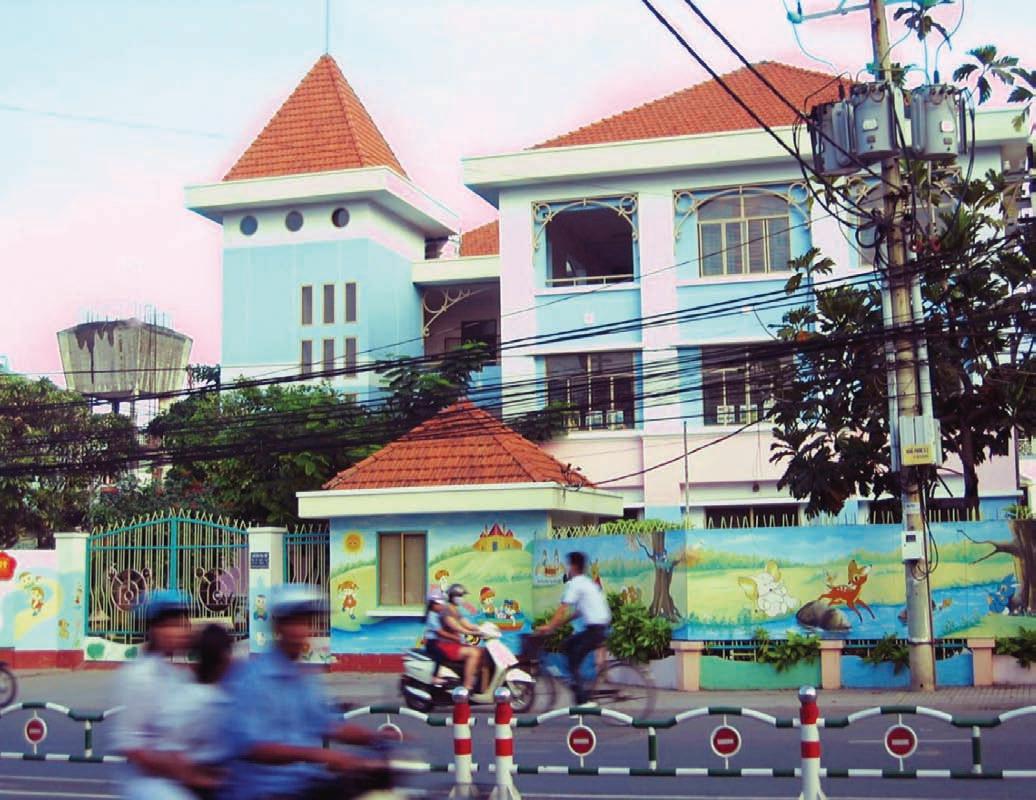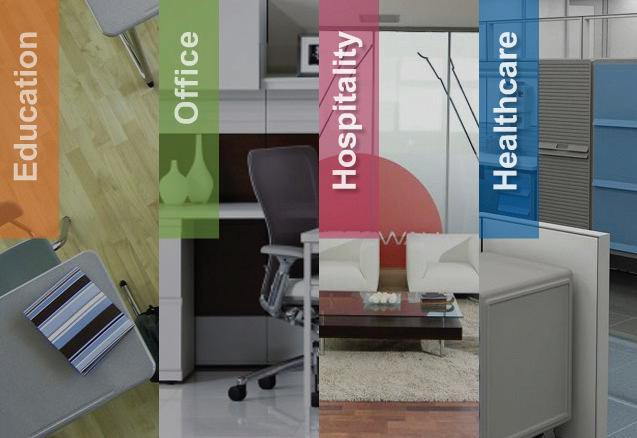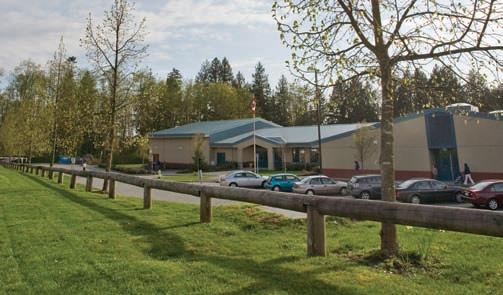
9 minute read
World-class School Buildings
BY MICHAEL DORN
Far from a typical school in Vietnam, this Saigon school pictured here is a truly remarkable example of how the right approach to creating compelling and positive body language can dramatically improve the safety, effectiveness and climate of a school. This school will be highlighted as a case study by Michael Dorn at the International School Safety Design Conference in Denver this April. Photographic credit: ©2010 Michael Dorn - Safe Havens International Inc.

The wait at Calgary International Airport offers an excellent opportunity to write an article I had promised to finish some time ago. After two days of presenting to students, school officials, parents, community service agency professionals and public safety officials in Taber, Alberta, my mind is racing from the productive dialogue that occurred among the many awesome individuals I had the good fortune to meet and interact with during the whirlwind experience. With seven different presentations, which had been tailored for various groups, the days flew by, and many great people exhibited genuine care and concern for school safety. The numerous flashes of brilliance in their astute observations, questions and suggestions during the sessions made the visit even more impactful. As with my previous keynotes in Canada, I learned new ideas that can now be shared with school and public safety officials in other countries.
One of the most recurrent themes of each session was the discussion about how much school design can influence safety, security and emergency preparedness. Every school building speaks to those who enter it. The body language of a school can be a powerful, positive influence or conversely, it can inadvertently send clear negative messages to students, staff and visitors. Neutral building body language is also very common in schools and can be viewed as a missed opportunity to improve school safety and school climate. Creating a close connection between the place and the people who utilize it for teaching, learning and socializing can be a huge asset to school officials seeking to create and maintain a safe school climate that is conducive to learning. While we can find many instances of successful schools with relatively poor body language, the school leaders who create superb places of learning have to work considerably harder to overcome the challenges building design can create.
Like most schools anywhere we travel, every school I visited in Taber had incorporated numerous excellent examples of positive body language, such as thoughtful statements of encouragement in the form of posters, banners, school mission statements, student artwork, colour schemes, trophies and awards. Between presentations, short building tours with key personnel allowed an opportunity to explore how these important and powerful concepts could be even more effectively utilized in the division’s schools.
The various groups tasked to work together to further enhance the level of safety, security and emergency preparedness discussed how policies, practices, human interaction and child advocacy can serve as tools to make schools safer and more pleasant places. To make those strategies even more effective and to reduce the amount of effort needed to
achieve these worthy goals, there was much discussion about how to build on the numerous effective strategies that have been put into place over the years.
One approach under consideration is to increase the use of the powerful concept of territoriality by more comprehensive applications of highly visual cues to connect people to the school. We urge our clients to move to a much greater depth and geographic dispersal of the application of territoriality than most examples we see in schools. We have seen a few rare examples of schools that have so incorporated these concepts, they are what we consider to be truly world-class places of learning that would stand out as amazing schools in any city in the world. If a school building is so visually captivating it would cause a tourist to stop and take photographs in London, New York, Calgary, Tokyo or Sydney, and if it also has the appropriate human efforts to create dignity, honour and respect combined with excellent instruction, its safe to say that such a place is truly a world-class place of learning. Schools of this type are typically far easier places in which to teach and learn. There is also a great deal of evidence that such schools tend to be much safer than they might be otherwise.
Working with schools in different regions of the U.S., Canada and other parts of the world has been a truly eyeopening experience. It is easy to find school buildings that could have been designed much more effectively from a safety, security and emergency preparedness standpoint. At the same time, exceptional use of key concepts such as crime prevention through environmental design (CPTED) can be found in places we may not expect. For example, I have seen many examples of the excellent application of CPTED, not only in Canadian and U.S. schools, but also in schools in Guatemala and Vietnam. While I have seen numerous unforgettable uses of CPTED in places like Quebec City, Tel Aviv and Las Vegas, I was initially caught quite off-guard to see it so widely utilized in developing nations where school budgets are incredibly limited compared to the standards of wealthier nations. Upon further
In spite of many challenges posed by the limitations of the way his school was built many years ago, the Saigon school’s principal has been able to triple the attendance rate at his South African elementary school. By developing a close connection between staff, students and their parents, he has created a warm, secure and positive school climate where children are free to learn and teachers can teach effectively. Imagine what he and his staff would be able to accomplish in a school facility on par with the Saigon school pictured on page 32. Photographic credit: ©2010 Michael Dorn - Safe Havens International Inc.

CRIME PREVENTION THROUGH ENVIRONMENTAL DESIGN (CPTED)
CPTED involves a variety of concepts focused on the reduction of crime, violence and fear while improving the feeling of safety and comfort in a physical place. CPTED measures are typically much more passive than traditional approaches to security, such as the use of security cameras. CPTED works extremely well when it is properly combined with other approaches, namely security technology, school resources officer programs, effective security policies and an emphasis on how staff interacts with and develops appropriate personal connections with students. The three primary concepts of CPTED are: • establishing positive territoriality • connecting people to the physical place so they will take ownership and responsibility to protect what they view as their place • creating natural access control
Access control technologies can significantly enhance school security as long as staff and students are convinced to buy into the human practices that are needed to support effective access control. However, natural access control can dramatically improve the reliability of a school’s security system while reducing the potential “prison-like” feel that can be extremely corrosive in a school.
INCREASING THE USE OF NATURAL SURVEILLANCE
People who desire to commit criminal acts or violate school policies often have a strong preference to perform their prohibited and unwelcome actions in privacy. While security cameras have great value to help identify offenders after the fact, provide excellent documentation and deter some violators, natural surveillance often affords considerably greater deterrence. One Nevada school system reported reductions of up to 50 per cent in schools where student supervision was modified to include diagram-based student safety surveys using GIS mapping to identify hotspots. By simply moving staff to hotspots at relevant times of day, a greater decrease in negative activities was achieved than had been achieved with extensive and expensive security cameras utilized without proper human support.
reflection, it makes sense and is only natural these often low-cost or no-cost concepts would be applied in schools where security cameras and high-tech access control systems are simply not a financial possibility.
I shall never forget listening to a wonderful principal in a South African elementary school explain, with a surge of emotion, how there were simply no funds available to hook up a room full of computers the school had acquired. He had managed to triple attendance at his school by creating a warm and caring environment for the students, but knew how important it was for them to also have computers in order to achieve their potential. Adding security cameras would be just about as difficult for this principal as it would be for a Canadian principal to purchase a new police car for their school’s resource officer. At the same time, the South African administrator could teach many valuable lessons to his colleagues in the U.S. or Canada; for example, his efforts to create a positive and caring climate for children with few resources other than the most important resource he has— his staff—were truly remarkable. The climate that he, his staff and students have created at the school was most impressive. I have never seen school staff and children who were more courteous, polite, friendly, freely expressive and joyous than those attending his school.
Interestingly, a South African school principal’s salary is based partially on attendance rates, in order to encourage administrators to work harder to keep challenging students in school instead of expelling them to make the job of educating students easier. Another reason for this approach is the difficulty faced in getting children to attend school at all in some rural communities. I have visited many schools where far more elaborate approaches have been applied in an attempt to maintain a fun, peaceful and effective learning environment with far less success.
One example of a simple technique involves more effective utilization of staff to improve student supervision. We do advanced-level training on how student supervision can be improved through simple yet powerful concepts, such as proper positioning of staff, pacing and spacing of children to improve natural surveillance and other easy-toapply practices. While we see very few K12 schools in North America with truly effective student supervision, the staff in this school were doing an excellent job of using proper positioning of staff, exercising proper span of control for outdoor activities, and using other basic, critical techniques to enhance student supervision.
Perhaps this should give us pause to reflect on how we may want to take a closer look at the security, safety and emergency preparedness measures that relate to how the place of school is designed, painted, maintained and how the people who are in these places of learning work to create and maintain dignity, honour and respect. The place of school can significantly shape our perceptions as well as our actual experiences there.
The time has arrived for my flight to board so I can return to another country I love. I sincerely hope you gleaned something of enough worth for the time you dedicated to reading this. I am grateful for your efforts and for your commitment to make the students, staff and visitors to the schools in your awesome country safer.
About the Author: Michael Dorn serves as the executive director for Safe Havens International Inc., a global non-profit school safety centre. During the past thirty years, Michael’s work has taken him to Canada, Mexico, Central America, Europe, South Africa, Asia and the Middle East. The author of 25 books on school safety, Michael regularly keynotes conferences and works with school officials and architects to design safer schools in new construction and renovation projects. The author welcomes questions, comments, differing viewpoints and suggestions at www.safehavensinternational.org

12160 - 103A Avenue Surrey British Columbia V3V 3G8
www.BELPAR.com











